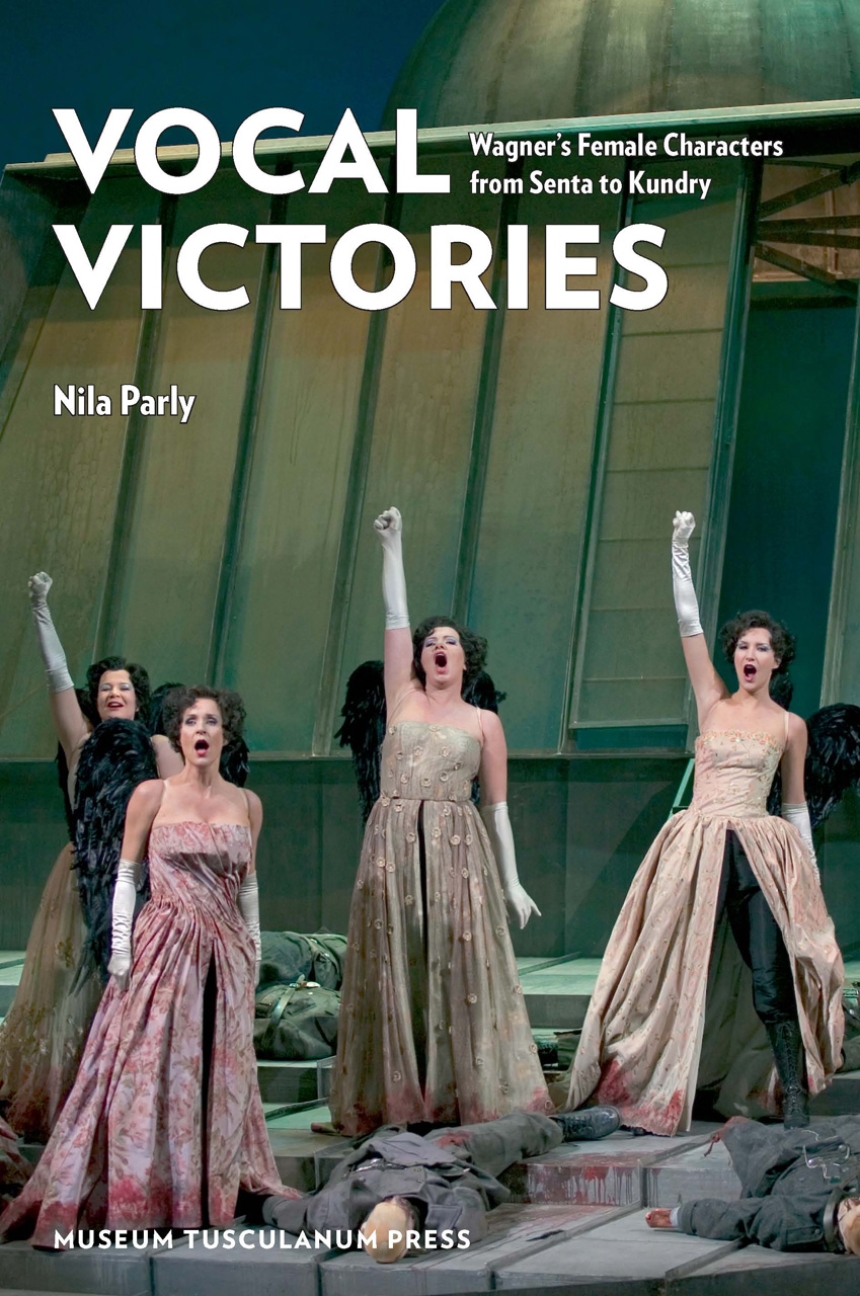9788763507714
Distributed for Museum Tusculanum Press
Vocal Victories
Wagner’s Female Characters from Senta to Kundry
Vocal Victories is the first musicological comparison of all of Richard Wagner?s great female characters. It has long been customary to view them and other opera heroines as victims, because the women, as a rule, perish during the plot of the opera. A closer study of the music of the women reveals, however, that it is in the female characters that the new and groundbreaking musical material comes into being, and that the women are far more in command of the development of the works than a superficial view will show. The book claims that Wagner was far ahead of his time in terms of equality between the sexes, and the musicological analyses are supported by the composer?s own writings.
Table of Contents
Foreword
Introduction
A snapshot
Wagner on stage
Senta. Der fliegende Holländer
Form Heine to Wagner
The performative ballad
Senta’s song—germ of the opera
Schröder-Devrient and Fidelio
Gender and female characters in Der fliegende Holländer
Elisabeth and Venus. Tannhäuser
Between Der fliegende Holländer and Lohengrin
The progressive music of the Venusberg
Song to Venus
Elisabeth as active onlooker
Venus as puppeteer
Gender and female characters in Tannhäuser
Elsa and Ortrud. Lohengrin
Folktale and tragedy
Elsa’s dream and the forbidden question
Ortrud the serpent
Power of the body
Elsa’s and Ortrud’s fatal synthesis
Two interpretations: Nattiez and Cicora
Gender and female characters in Lohengrin
Brünnhilde. Der Ring des Nibelungen
Background
Introduction
Wagner’s aesthetic
The ’effeminate’ Wagner
Wagner’s interpretation of the Oedipus myth
The genesis of the work
Selected interpretations
Catherine Clément—structuralism
Critique of Clément
Leopold: text versus music
Nattiez and the growing domination of the music-woman
Abbate on the sibyl’s final song
Brünnhilde’s laughter in Abbate’s ears
Summing up
Analyses
Feminising of the Renunciation of Love motif
Tonal relations
Oper und Drama as interpretative strategy
Brünnhilde takes control of Wotan’s enterprise
The other women in Der Ring des Nibelungen
The dissonant incest of the twins
How the symbols of the Ring change hands
Struggle for a feminine ending
Gender and female characters in Der Ring des Nibelungen
Isolde. Tristan und Isolde
Brünnhilde versus Isolde
Isolde’s power over Tristan
The music and the woman
The second death
Isolde’s Liebestod: woman’s ruin
—Or triumph?
The endless melody
The Gesamtmelodie
Through Isolde’s eyes
The ’Tristan chord’
Gender and female characters in Tristan und Isolde
Eva. Die Meistersinger von Nürnberg
Background Master’s mistress courting
Where the shoe pinches
Birth of the drama in the overture
The Tristan und Isolde theme
Gender and female characters in Die Meistersinger von Nürnberg
Kundry. Parsifal
From Wolfram to Wagner
Act 1: The original woman, Eve
Act 2: Courtesan Mary Magdalene
Act 3: Pure Virgin Mary
Visual dialectics of the score
Wagner’s final opera triad
Fear of woman—fear of death
The Good Friday Music
Kundry’s A minor death
Gathering the threads
Gender and female characters in Parsifal
Conclusion
Notes
Bibliography
Musical Scores
Index
Introduction
A snapshot
Wagner on stage
Senta. Der fliegende Holländer
Form Heine to Wagner
The performative ballad
Senta’s song—germ of the opera
Schröder-Devrient and Fidelio
Gender and female characters in Der fliegende Holländer
Elisabeth and Venus. Tannhäuser
Between Der fliegende Holländer and Lohengrin
The progressive music of the Venusberg
Song to Venus
Elisabeth as active onlooker
Venus as puppeteer
Gender and female characters in Tannhäuser
Elsa and Ortrud. Lohengrin
Folktale and tragedy
Elsa’s dream and the forbidden question
Ortrud the serpent
Power of the body
Elsa’s and Ortrud’s fatal synthesis
Two interpretations: Nattiez and Cicora
Gender and female characters in Lohengrin
Brünnhilde. Der Ring des Nibelungen
Background
Introduction
Wagner’s aesthetic
The ’effeminate’ Wagner
Wagner’s interpretation of the Oedipus myth
The genesis of the work
Selected interpretations
Catherine Clément—structuralism
Critique of Clément
Leopold: text versus music
Nattiez and the growing domination of the music-woman
Abbate on the sibyl’s final song
Brünnhilde’s laughter in Abbate’s ears
Summing up
Analyses
Feminising of the Renunciation of Love motif
Tonal relations
Oper und Drama as interpretative strategy
Brünnhilde takes control of Wotan’s enterprise
The other women in Der Ring des Nibelungen
The dissonant incest of the twins
How the symbols of the Ring change hands
Struggle for a feminine ending
Gender and female characters in Der Ring des Nibelungen
Isolde. Tristan und Isolde
Brünnhilde versus Isolde
Isolde’s power over Tristan
The music and the woman
The second death
Isolde’s Liebestod: woman’s ruin
—Or triumph?
The endless melody
The Gesamtmelodie
Through Isolde’s eyes
The ’Tristan chord’
Gender and female characters in Tristan und Isolde
Eva. Die Meistersinger von Nürnberg
Background Master’s mistress courting
Where the shoe pinches
Birth of the drama in the overture
The Tristan und Isolde theme
Gender and female characters in Die Meistersinger von Nürnberg
Kundry. Parsifal
From Wolfram to Wagner
Act 1: The original woman, Eve
Act 2: Courtesan Mary Magdalene
Act 3: Pure Virgin Mary
Visual dialectics of the score
Wagner’s final opera triad
Fear of woman—fear of death
The Good Friday Music
Kundry’s A minor death
Gathering the threads
Gender and female characters in Parsifal
Conclusion
Notes
Bibliography
Musical Scores
Index

